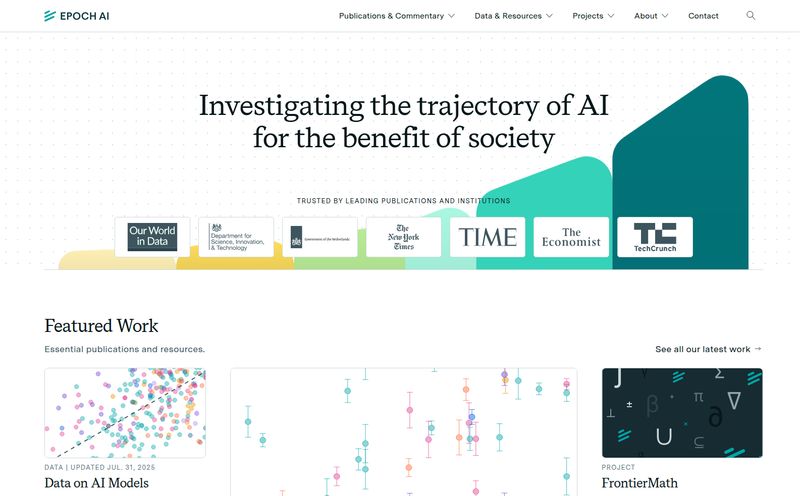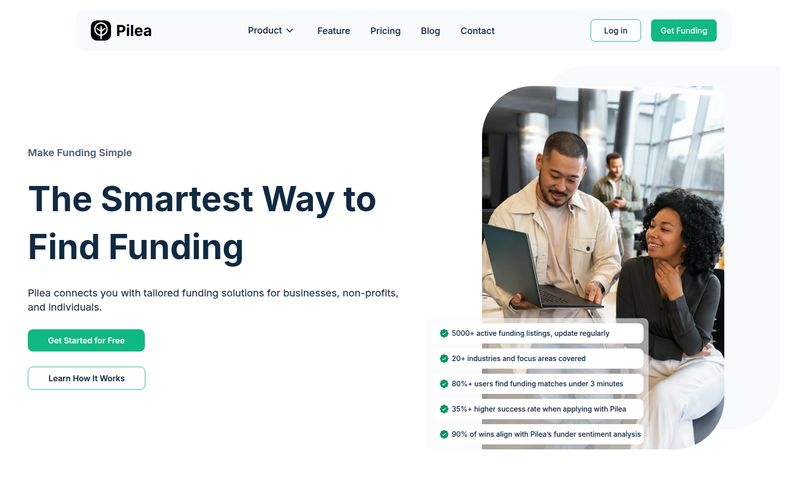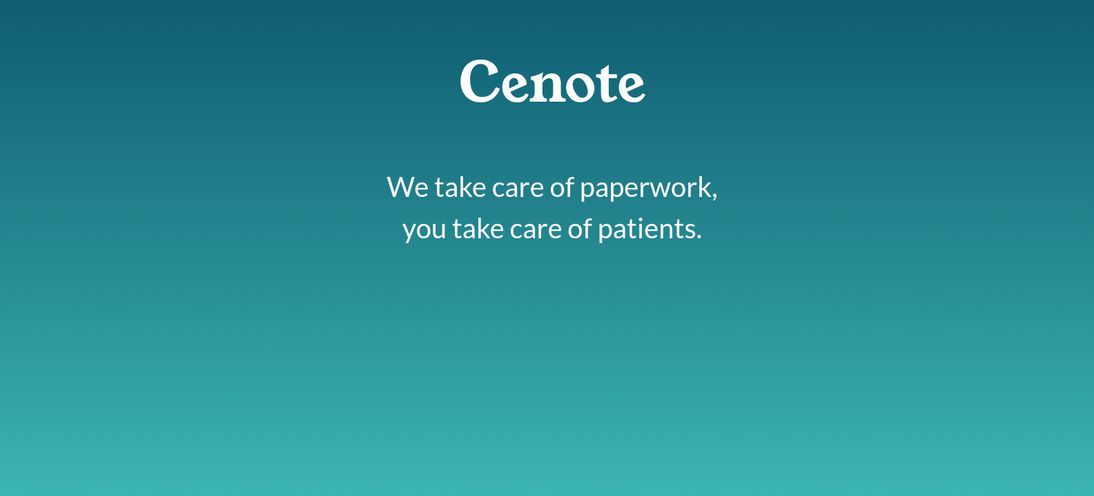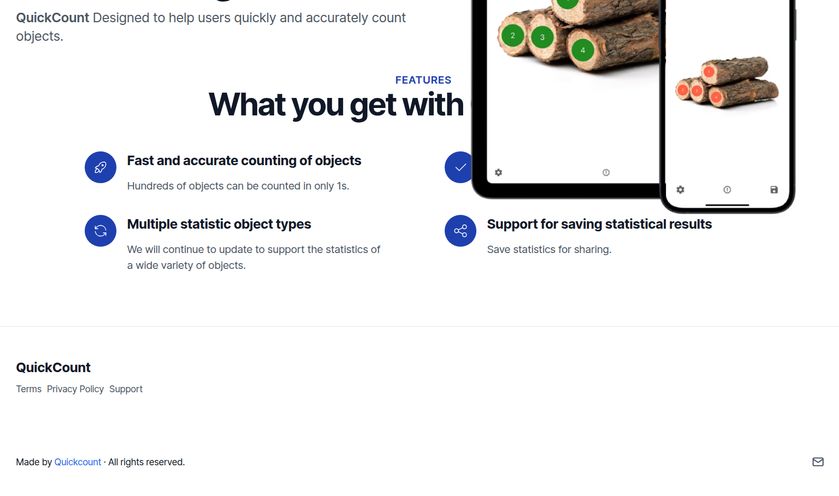We’ve all been there. It’s 9 PM on a Tuesday, and a Slack message pops up from the finance team. “Hey, is the revenue dashboard broken?” Your heart sinks. You open the dashboard. It’s not just broken; it’s telling a story so wild it belongs in a science fiction novel. And so begins the frantic hunt through endless SQL queries, dbt models, and Fivetran logs to find the source of the problem. This is the silent, soul-crushing nightmare of modern data work: when the data dies, but nobody tells you.
For years, we've had amazing tools for application monitoring—think Datadog or New Relic. If your website goes down, you know instantly. But for data? We’ve been living in the dark ages, armed with little more than gut feelings and manual checks. A whole category of tools has sprung up to fix this, flying the banner of “data observability.” And I’ve looked at a lot of them. Some are clunky, some are absurdly expensive, and some feel like they were designed by people who’ve never actually had to debug a data pipeline at midnight.
But then I came across Metaplane. And I have to say, I'm intrigued. Their promise is simple: know when data breaks, what went wrong, and how to fix it. Fast. Is it just another tool making big promises, or is this the real deal? Let’s get into it.
So, What Exactly is Metaplane?
In the simplest terms, Metaplane is a smoke detector for your data warehouse. You connect it to your data stack—your Snowflake, BigQuery, or Redshift, your BI tools like Looker or Tableau—and it just… watches. It’s not just watching for if the system is “on,” but for the health and quality of the data flowing through it. Did a table that usually gets a million new rows a day suddenly only get ten? Metaplane will tell you. Did a column that’s always full of unique IDs suddenly get a bunch of nulls? Metaplane sends an alert.
This isn't just simple threshold alerting, either. This is the core of what data observability is supposed to be. It's about understanding the normal rhythm of your data and intelligently identifying when something deviates from that rhythm. It's the difference between a smoke alarm that just screams when it detects any smoke, and a smart system that knows you're just searing a steak and tells you to open a window.
Metaplane aims to give you that trust back in your data infrastructure, so you can stop being a data firefighter and start being, well, whatever your actual job title is.
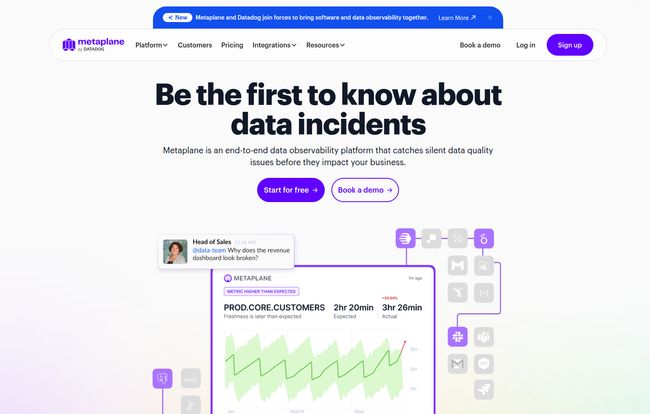
Visit Metaplane
My Favorite Features That Aren't Just Marketing Fluff
Every SaaS tool's homepage is a wall of buzzwords. But when you get your hands on a product, you quickly figure out what's real and what's fluff. Here’s what stood out to me about Metaplane.
That 15-Minute Setup Promise
Okay, I’m always skeptical of these claims. “Set up in minutes!” usually means “Set up in minutes if you’re the person who built the tool and have three PhDs.” But with Metaplane, the 15-minute setup is… surprisingly legit. The process of connecting a data warehouse is straightforward, and once it's connected, the platform immediately starts analyzing your metadata to suggest what you should be monitoring. It looks at your most queried tables and dashboards and says, “Hey, a lot of people use this stuff. You should probably keep an eye on it.” This is a massive win. It lowers the barrier to entry from a weeks-long implementation project to something you can do over a cup of coffee.
The Machine Learning that Gets It
The real magic here is the anomaly detection. It uses machine learning to understand seasonality and trends. Why does this matter? Because a simple “alert me if volume drops by 20%” rule is dumb. Your business isn't static. An e-commerce company’s data patterns on a Tuesday in July are completely different from Black Friday. Metaplane learns these patterns. It knows that a drop in traffic on Saturday morning is normal, but a similar drop on Monday afternoon is a five-alarm fire. This drastically reduces alert fatigue—the constant pinging from dumb alerts that eventually makes you ignore all of them. These are noise-free alerts, and my sanity thanks them for it.
Column-Level Lineage is a Lifesaver
If you've ever had a broken dashboard, you know the pain of trying to work backward to find the cause. “Is it the BI tool? The dbt model? The source data? An Fivetran sync error?” It's a needle in a haystack. Metaplane provides end-to-end, column-level lineage. This is a GPS for data errors. You can literally click on a field in a broken Looker dashboard and see its entire history, all the way back to the source table and column. This turns hours of detective work into a minutes-long investigation. Its a true game changer for any data team.
Data CI/CD for the Truly Proactive
This one is for my fellow data nerds. We’ve had CI/CD (Continuous Integration/Continuous Deployment) in software engineering for ages, a process that automatically tests code before it gets merged. Metaplane brings this concept to data. It can integrate with GitHub and run checks on your pull requests. Before you merge a change to a dbt model that might break ten downstream dashboards, Metaplane can warn you directly in the PR. This is about preventing data quality issues before they happen. It’s moving from being reactive to being proactive, which is the holy grail.
Let's Talk Turkey: The Metaplane Pricing Model
Pricing can make or break a tool, no matter how good it is. Metaplane has a pretty interesting model that feels both fair and modern. It’s not some opaque “Contact Sales” black box, at least not entirely.
| Plan | Price | Key Features |
|---|---|---|
| Free | $0 | Includes 10 monitored tables and 4 users. Perfect for trying it out or for small teams. |
| Pro | Usage-based | Pay per monitored table. Includes 12 users and unlimited viewers. |
| Enterprise | Custom | Custom pricing for large teams needing more support, SSO, and other enterprise-grade features. |
The Free tier is genuinely useful, not just a crippled demo. Ten monitored tables is enough to cover the most critical data assets for a small company and get a real feel for the platform. The Pro plan’s “pay per monitored table” model is what I call honest pricing. You pay for what you get value from. Some might argue this could get expensive if you have a huge number of critical tables, and that's a fair point to watch. Also, be aware that some advanced features might be add-ons, so your cost could creep up. As always, do your homework.
The Good, The Bad, and The Data-Ugly
No tool is perfect. Let’s break down the pros and cons in a no-nonsense way.
On the plus side, the speed of setup is phenomenal. Getting from zero to your first alert in under an hour is a massive selling point. The intelligent, ML-driven alerting that cuts down on noise is another huge win. And for companies handling sensitive information, their security posture (SOC 2 Type II, GDPR, CCPA, HIPAA compliant) is rock-solid. You can feel safe connecting your data.
On the other hand, the pricing model, while transparent, is directly tied to the number of tables you monitor. For massive organizations, this could become a significant cost to track. You have to be deliberate about what you choose to watch. The con listed as “Requires connecting to data warehouse and other tools” is, frankly, a bit silly. That's... the point of the tool. It’s like saying a con of a car is that it requires gasoline. But it does mean there's an initial setup step, and you need the right permissions to get it done.
Who is Metaplane Actually For?
So, who should be rushing to sign up? If you’re a data engineer, analytics engineer, or part of a central data team at a tech company, Metaplane is built for you. It’s for any organization where data isn’t just a nice-to-have, but is a core part of the product or operations. If a broken data pipeline causes real business problems for you, you're the target audience.
It’s particularly sweet for small-to-mid-sized companies and startups that are scaling fast. They often have complex data stacks but lack the massive engineering teams to build and maintain a homegrown observability solution. For them, Metaplane offers enterprise-level power without the typical enterprise-level implementation headache. Larger enterprises with established but creaky data quality processes could also see huge benefits, especially with features like Data CI/CD and custom offerings.
Frequently Asked Questions About Metaplane
I get a lot of questions about these tools, so here are some quick answers.
- How long does it really take to set up Metaplane?
- For a basic connection to a data warehouse like Snowflake and getting your first suggested monitors, 15-30 minutes is realistic. Integrating everything (BI tools, dbt, etc.) will take a bit longer, but you can see value very quickly.
- What integrations does Metaplane support?
- They have a broad list. For data warehouses, it includes Snowflake, BigQuery, Redshift, and Databricks. It connects to BI tools like Looker, Tableau, and Mode; ingestion tools like Fivetran and Airbyte; and it sends alerts to Slack, MS Teams, and PagerDuty.
- Is Metaplane secure enough for my company’s data?
- Yes. They are SOC 2 Type II compliant and also comply with GDPR, CCPA, and HIPAA. This is a top-tier security standard, so you can be confident your data is handled responsibly.
- How does the ML anomaly detection work?
- It analyzes historical data for metrics like row counts, freshness, and column-level stats to build a model of what’s “normal.” It accounts for things like day-of-week trends and long-term growth, so it can distinguish a real problem from expected fluctuations.
- Can Metaplane help me lower my data warehouse costs?
- Indirectly, yes. It has a feature for understanding warehouse spend by showing you unused tables and dashboards. By identifying this “data exhaust,” you can deprecate unused assets and reduce compute costs. Pretty handy.
- Is the free plan actually useful or just a demo?
- It’s surprisingly useful. 10 monitored tables is enough to cover your most critical revenue or product tables and prevent major incidents. It's a great way to prove the tool's value before upgrading.
My Final Verdict
Look, the data observability space is getting crowded. But Metaplane seems to be cutting through the noise by focusing on what actually matters to data practitioners: fast time-to-value, intelligent alerts that don't drive you crazy, and deep visibility that actually helps you solve problems. It feels like a tool built by people who have felt the pain of a broken pipeline firsthand.
It’s not a silver bullet—you still need good data practices—but it is a powerful guardian for your data ecosystem. If you’re tired of being the last to know when your data goes haywire, I think giving Metaplane's free plan a spin is a no-brainer. It might just be the thing that lets you sleep a little better at night.
Reference and Sources
- Metaplane Official Website
- Metaplane Pricing Page
- An External Article on Data Observability for further reading.
